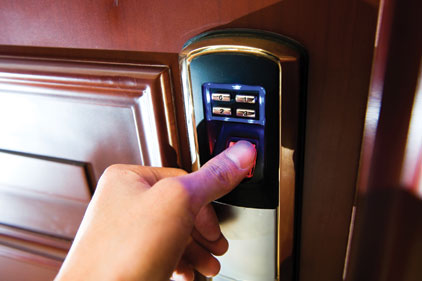Door hardware plays such a significant role in access control and identification. A door that does not close properly provides no access control. The alignment of the door: the door hinges, return and handle hardware all combine with an electronic access device or a key to secure a room, building or facility. It is the quality of door hardware that makes for an operational physical barrier or controlled access point.
Several months ago I had the privilege to speak at the Builders Hardware Manufacturers Association (BHMA) annual conference. The major purpose of this association is to develop and communicate standards in door hardware. It was impressive to see the large number of manufacturers, both international and regional, represented at the conference who take part in the creation and review of door hardware standards.
It is not necessary to develop standards for every aspect of access control and identification, but some standards make sense – such as BHMA. The association looks to provide a safe and secure environment through standards in door hardware manufacturing. When it comes to access control and ID, maybe more consideration should be given to developing standards in electronic access control devices, ID cards and identification products.
There are minimal published standards: ISO/IEC 7810 Identification cards and the Transportation Worker Identification Credential or TWIC. ISO/IEC 7810 provides an international standard that defines the physical characteristics for identification cards, like physical dimensions, resistance to bending, flame, chemicals, temperature and humidity, toxicity and resistance to heat. TWIC sets standards in the type and application of cards for transportation workers. However, for access control and identification, standards make sense when they focus on the manufacturing and installation of products.
There are real advantages to creating standards for the manufacture and installation of electronic access control equipment – setting product quality standards and categorizing products for specific uses. For example, BHMA has established lockset grades for different industries. Many healthcare facilities utilize the highest grade door hardware because it is used 24/7/365. This produces a lot of stress on the internal mechanisms of a lockset as compared to an office building that is only operational during regular business hours. Product quality levels can be published so that users can determine what product works best for them.
For example, many electronic access control locksets have batteries that are designed to last for 18 to 24 months, on average, between battery changes. In the healthcare setting, most electronic locks will only last three to four months between battery changes, which limits purchases to the few manufacturers that cater to the healthcare industry.
Standards help to create an open use platform so products are interchangeable as opposed to being propriety in use. This is the case with the HVAC industry where products from different manufacturers are interchangeable and can communicate with each other.
Standardization creates ease of use for the end user and installer. When products are manufactured to the same set of standards, they become easier to install and use. For example, door locksets have standard sizes for mounting. The holes created in a door are a standard width and dimension so that any manufacturer’s door hardware can fit in any door. When all products are built in a similar fashion, they generally operate the same way. The internal mechanisms may differ, but when you insert a key and turn it clockwise, the door will unlock.
The collaboration between BMHA manufacturers allows for the creation of products that make for a safer and secure environment. Standards on the manufacturer of door hardware only improve the quality of products and make their use easier. This model should be extended to the electronic access control industry; card readers, controllers, magnetic locks and all other components should be manufactured and installed off of the same set of standards. These standards should be published so that the end user and installer are not only aware of the standards but know them well enough that they use them in purchasing and installing electronic access control equipment.


